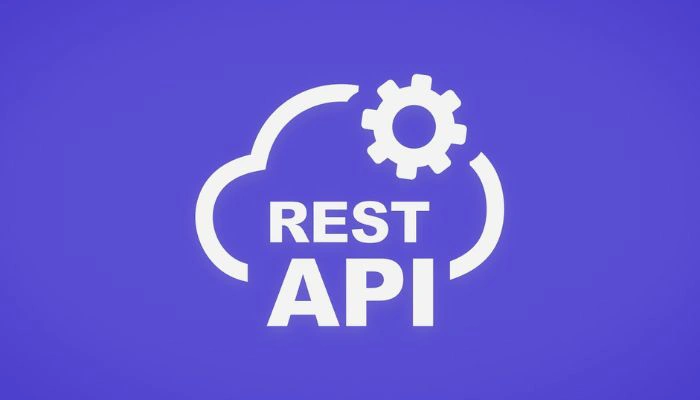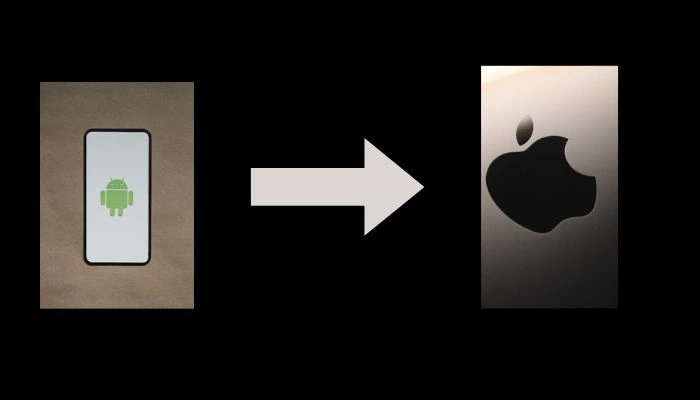Why Use React Native for Mobile App Development
A strong mobile presence is not just a luxury; it's a necessity for businesses of all sizes. As companies race to connect with their audience on smartphones and tablets, the choice of a mobile app development framework becomes a critical strategic decision. The market is saturated with options, from native frameworks like Swift for iOS and Kotlin for Android to various cross-platform solutions. This abundance can be overwhelming, but one framework has consistently risen to the top, proving its value with every new project: React Native.
This article will answer the pressing question for many businesses and developers: why is React Native for mobile app development such a compelling choice? We'll dive deep into its core benefits, from its unique ability to reuse code across platforms to its cost-effectiveness and impressive performance. We will explore how this framework allows for a faster time-to-market and provides a native-like user experience, all while being supported by a robust community and a vibrant ecosystem of tools.
By the time you finish reading, you will have a comprehensive understanding of why React Native stands as a powerful solution for building high-quality, efficient, and scalable mobile applications. Whether you are a business owner looking to launch a new app or a developer seeking to expand your skills, this guide will provide the insights you need to make an informed decision and embark on your next successful project.
The Core Benefits of React Native for Mobile App Development

React Native has revolutionized the mobile app development landscape by addressing some of the most common challenges faced by businesses and developers. Its ability to create cross-platform applications from a single codebase is its most significant advantage, leading to a cascade of other benefits that save time, money, and resources. Here's a closer look at the key reasons why so many companies are choosing React Native for mobile app development.
1. Cross-Platform Code Reusability
At its heart, React Native operates on the principle of "write once, run anywhere." Developers can write a single codebase in JavaScript and use it to build apps for both iOS and Android. This dramatically reduces development time and effort. Instead of maintaining two separate teams and two distinct codebases, a single team can build and manage an application that works seamlessly on both major mobile platforms. This efficiency is a game-changer for startups and established enterprises alike, as it significantly shortens the development cycle and accelerates time-to-market.
2. Cost-Effectiveness and Faster Development
The ability to share a single codebase directly translates to a lower total cost of ownership. You don't need to hire and manage two separate development teams—one for iOS and one for Android. This not only cuts down on initial hiring costs but also reduces long-term maintenance expenses. Furthermore, React Native's "Hot Reloading" and "Fast Refresh" features allow developers to see the changes they make in real-time, eliminating the need to re-compile the entire application. This rapid feedback loop makes the development process more agile and efficient, allowing for quicker bug fixes and feature rollouts.
3. Native-Like Performance and User Experience
One of the most common misconceptions about cross-platform frameworks is that they compromise on performance. React Native shatters this myth by rendering UI components using actual native APIs. This means the app isn't a "web view" or a wrapped website; it is a true mobile application that interacts directly with the device's hardware and operating system. The result is a smooth, responsive, and high-performance user experience that is virtually indistinguishable from a fully native app. For many apps, especially those not requiring heavy graphics or intensive CPU operations like mobile gaming, the performance of a React Native app is more than sufficient.
4. Large and Active Community Support
React Native is an open-source framework backed by Meta (formerly Facebook), which created it. This has fostered a massive, global community of developers who actively contribute to its growth. This thriving ecosystem means there is a wealth of resources available, including documentation, tutorials, forums, and a vast collection of third-party libraries and components. When a developer encounters a problem, the solution is often just a quick search away, thanks to the collective knowledge of the community. This strong support system is invaluable for troubleshooting, learning, and staying up-to-date with the latest advancements.
5. Seamless Integration with Existing Native Modules
While React Native handles the majority of development needs, there are times when an app may require a highly specific, platform-exclusive feature. For example, an app that needs to access a unique hardware sensor or a proprietary API that hasn't been wrapped in a React Native library. In these cases, React Native offers a solution. It allows developers to write native code (in Swift, Kotlin, Java, or Objective-C) and seamlessly integrate it with the React Native codebase. This flexibility ensures that developers can leverage the best of both worlds, achieving platform-specific functionality without sacrificing the benefits of cross-platform development.
6. Simplified UI Development with a Component-Based Approach
React Native builds on the principles of React, a popular JavaScript library for building user interfaces. It uses a component-based architecture, where the UI is broken down into small, reusable pieces. This modular approach makes it easier to manage complex UIs and promotes code reusability across different screens. A developer can build a button or a text input component once and use it wherever needed, ensuring a consistent design and reducing the chance of errors. This modularity also simplifies the debugging process, as it is easier to isolate and fix issues within individual components.
React Native vs. Native App Development: A Comparative Analysis

When considering the best approach for a new mobile app, the debate between React Native and native development is often at the forefront. While native apps offer peak performance and direct access to device features, the benefits of React Native are often more aligned with modern business goals. Let's compare the two approaches across key metrics.
| Feature | React Native App Development | Native App Development |
| Codebase | Single codebase for iOS and Android, primarily in JavaScript. | Separate codebases for iOS (Swift/Objective-C) and Android (Kotlin/Java). |
| Development Time | Significantly faster due to code reusability and hot-reloading. | Slower, as the app must be built and maintained for two platforms. |
| Cost | Lower development and maintenance costs. | Higher costs due to the need for two separate teams and codebases. |
| Performance | Excellent for most apps, with near-native performance. May have minor limitations for highly complex, graphics-intensive applications. | Unparalleled performance and direct access to all native features. The go-to for high-performance games or processor-intensive apps. |
| Maintenance | Easier to update and maintain a single codebase. Updates are applied to both platforms simultaneously. | More complex and time-consuming, as updates and bug fixes must be implemented for each platform individually. |
| Developer Talent | Easier to find skilled JavaScript developers with React experience, who can quickly transition to React Native. | Requires hiring specialized developers for each platform, which can be more challenging and expensive. |
Notable Apps Built with React Native
The true testament to a framework's power lies in its real-world application. React Native is not just for small-scale projects; it powers some of the most popular and widely used mobile applications in the world. Its versatility and scalability have made it the framework of choice for major companies across various industries.
- Facebook: The social media giant itself uses React Native for parts of its primary app and for its Ads Manager app, demonstrating the framework's capability to handle complex, high-traffic applications.
- Instagram: A portion of the world's most popular photo-sharing app is built with React Native. The ability to push new features to both iOS and Android simultaneously was a significant factor in their adoption.
- Discord: This popular communication platform uses React Native for its iOS and Android apps, leveraging the framework's performance to deliver a seamless and responsive user experience for millions of users.
- Walmart: The retail titan rebuilt its mobile app using React Native to improve performance and user experience, resulting in a more efficient and responsive shopping experience for its customers.
- Wix: The website-building platform uses React Native for its mobile app, allowing users to manage their sites and interact with their business on the go.
The success of these companies with React Native for mobile app development is a clear indicator that the framework is a robust, reliable, and scalable solution for building a wide range of applications, from social media platforms to e-commerce and beyond.
Best Practices for Successful React Native App Development

To get the most out of React Native, it's crucial to follow certain best practices that enhance performance, maintainability, and scalability.
1. Efficient State Management: For larger applications, managing the state of your app can become complex. Using dedicated state management libraries like Redux or MobX helps keep your application predictable and easier to debug. This centralizes your data flow and makes it simpler to track changes across different components.
2. Optimize Performance: While React Native offers great performance out of the box, you can always optimize further.
- Use FlatList and SectionList: When rendering long lists of data, these components are essential as they only render items that are currently visible on the screen, saving memory and improving performance.
- Minimize Re-Renders: Use React.memo for functional components and PureComponent for class components to prevent unnecessary re-renders when props or state haven't changed.
- Image Optimization: Compress and optimize images to reduce app size and improve loading times. Consider using react-native-fast-image for more efficient image handling.
3. Proper Code Organization: A well-structured codebase is easier to maintain and scale.
- Organize your code into logical folders (e.g., components, screens, services, redux).
- Use functional components with hooks, as they promote cleaner and more reusable code.
- Leverage TypeScript for static typing, which can catch bugs early in the development process and make your code more robust.
4. Testing and Quality Assurance: Treat your React Native for mobile app development project like any other professional software product.
- Implement a comprehensive testing strategy including unit tests, integration tests, and end-to-end tests.
- Use tools like Jest and the React Native Testing Library to ensure your app is reliable and free of critical bugs.
- Test on a variety of physical devices to catch platform-specific issues.
Conclusion
Choosing the right technology stack for your mobile application is a decision that will impact your business for years to come. By offering a potent combination of code reusability, cost-effectiveness, and near-native performance, React Native has cemented its place as a top-tier choice for modern mobile app development. It is a framework that allows businesses to achieve a faster time-to-market, reach a wider audience on both iOS and Android with a single investment, and benefit from a powerful, community-driven ecosystem.
If you are ready to transform your business idea into a high-performing mobile application and want to leverage the benefits of a single codebase, we are here to help. Contact us today to discuss how our expert team can bring your vision to life with top-tier React Native for mobile app development services.









